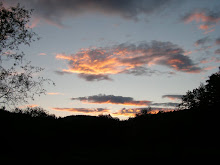Planting Roses: Helpful tips to make your planting easier; which means: more fun.
Planting a rose is extremely simple. Just take these steps one at a time and you will be growing your very own rose bush in no time at all.
- Select your planting area & choose the type of rose bush.
- Buy your plant.
- Prepare the soil.
- Water you plant. (very important)
Here we go… lets break these steps down and make it nice and simple.
Selecting the correct place to grow your rose bush is important. Most roses like the following environment:
- 6+ hours of (preferably morning) sunlight
- Slightly acidic soil; about 6.5
- Well drained soil.
With those details in mind, select the type of rose bush you want.
- Regular bush
- Climbing
- Hedge
If this is your first time planting roses, you may simply want to get a (few) regular bush style rose(s). They take less planning, preparation and care. Once you have had a little experience tending roses, climbing and hedge roses are a beautiful addition to any sunny landscape.
Purchasing your rose plant shouldn’t be a huge affair. Keep it simple especially for your first time. Generally plants come as either ‘bare’ roots or potted. And, they can be purchased from a local chain store like Wal-Mart or Home Depot, green house, or a rose garden center. Here are some pro’s and con’s
Pro’s Con’s
- Chain Stores: Pro's - Cheapest; Con's - No info on plants performance, have to rely on picture of flower
- Green House: Pro's - Potted plant, Can see plant style and flower color; Con's - Usually more expensive
- Rose Grower/Sellers: Pro's - Expert that can answer questions. Often can see plant in bloom; Con's - Usually a distance to travel
If you have a rose bush root instead of a potted plant, before preparing the planting site remove the root from its packing and place it in a 5 gallon pail of cool water. Place the bucket in the shade. Now, get your flower bed ready.
Preparing the soil will make planting easy and, more importantly, give your new rose bush a great start to a healthy life. You will want the following items:
- Shovel
- Trowel
- Fully composted cow manure
- Potting soil or good rich topsoil
- Pail of pine needles (enough for a handful for every cubic foot of hole) this increases the acidity of the soil
- Your new rose bush
- 5 gallons of water
First, remove any sod/grass in a circle about 2-2.5 feet in diameter. Dig a whole at least twice as wide as the root ball; and no less then 1.5 feet wide. Also, dig it 4-6 inches deeper then the root. Place about one inch of fully composted cow manure in the bottom of the hole. Sprinkle a handful of pine needles evenly throughout the hole and then add enough potting soil to allow the stock of the bush to be above ground level while the roots remain covered. Gently pour about 2 gallons of water in the whole and let it soak in. (Note: if the water does not soak in, but remains in the hole, then the area does not have good enough drainage. Choose another site.)
Now it’s time to place your plant in the hole. If you have a potted plant, try to keep as much of the soil with it as you place it in the center of the hole. Then carefully fill in potting soil around the edges using a trowel to work the soil into any air pockets. Gently press the soil down; a medium firmness, not to tight and not loose.
If you have a rose root, hold it in the center of the hole as you place potting soil in around it. Gently pack the soil down being very careful not to injure the root. This process works best with two people; one holding the root the other filling in the soil, but it can be done with just one.
Now the final step; water your new rose bush. Slowly add at least another 3 gallons of water to the area around the base of the plant. Let the water soak into the ground. Over the next couple of weeks you will want to water every other day. And make sure it’s a slow, soaking watering that reaches the deep roots. As your plant shows signs of new growth you can relax the watering cycle to 2-3 times per week depending on how hot and dry your climate is.

